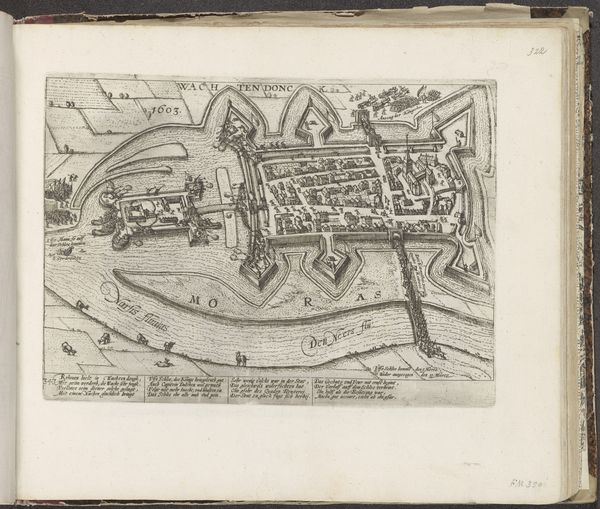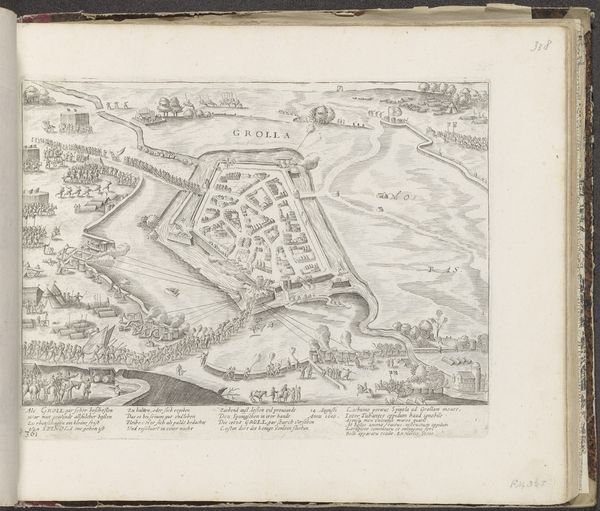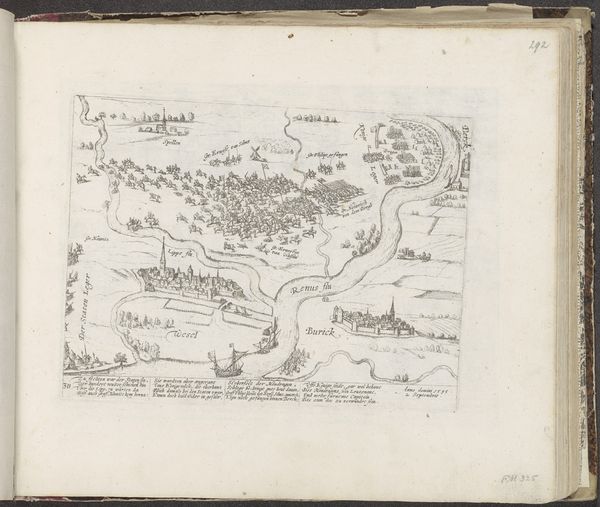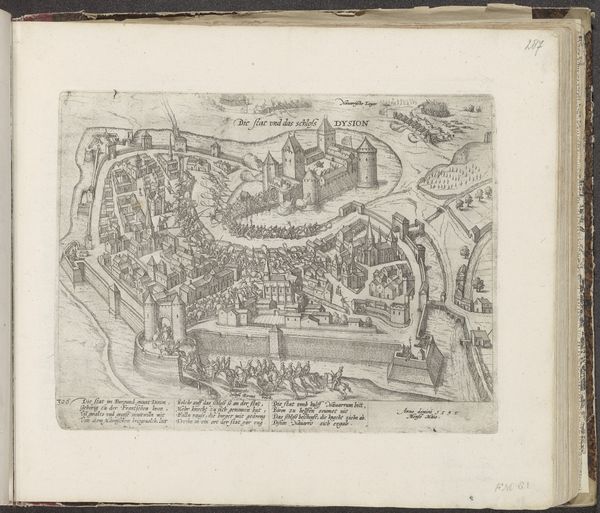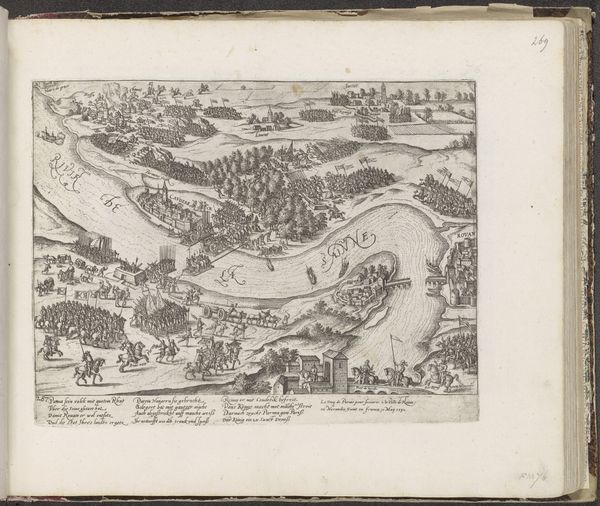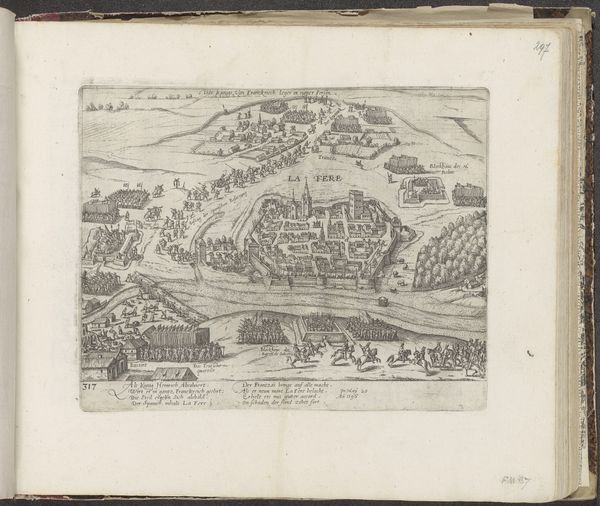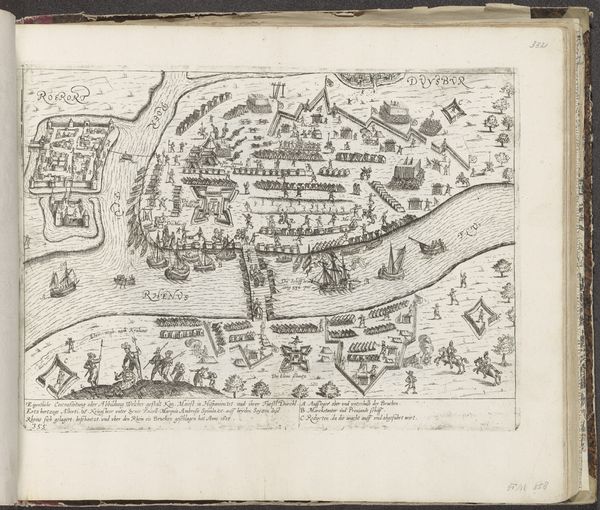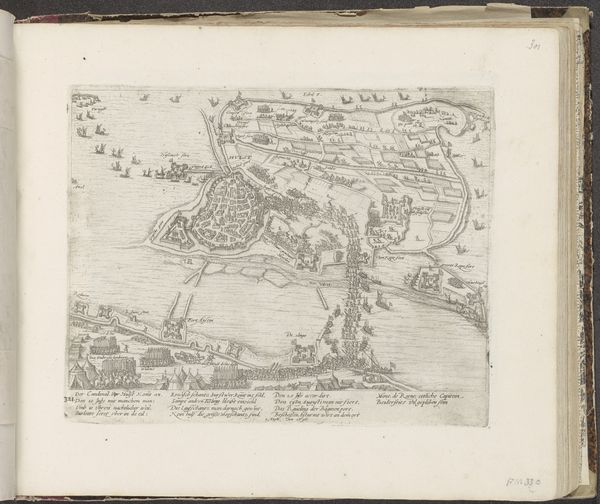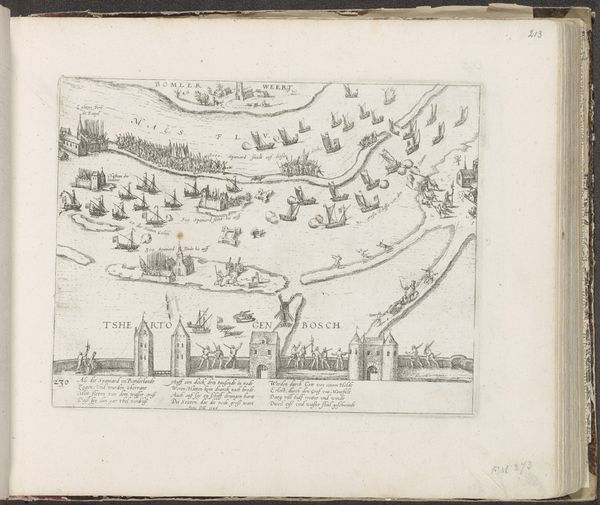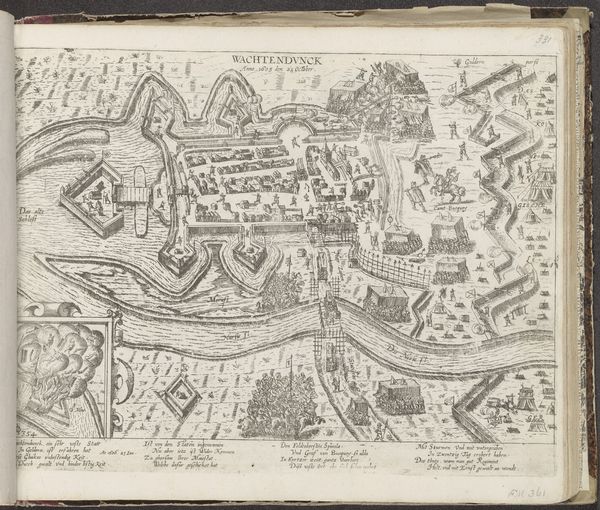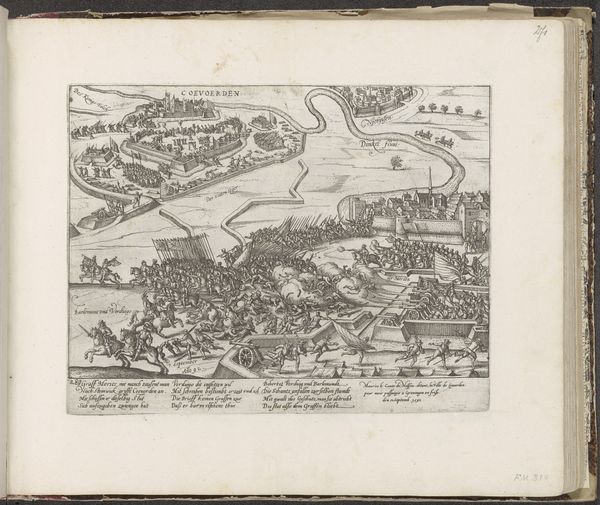
print, engraving
#
baroque
# print
#
cityscape
#
history-painting
#
northern-renaissance
#
engraving
Dimensions: height 201 mm, width 283 mm
Copyright: Rijks Museum: Open Domain
Editor: Here we have “Beleg van Schenkenschans door de Spanjaarden, 1599,” or "Siege of Schenkenschans by the Spanish, 1599", a print made between 1599 and 1601, an engraving by Frans Hogenberg. It depicts the siege of a fortress on a river. It feels very precise, like a military plan, but it's also surprisingly lively, filled with tiny figures. What do you see in this work? Curator: Well, first, I see a potent reminder of how deeply intertwined geography and politics were in the early modern period. Schenkenschans was strategically vital, a choke point on the Rhine. Consider how control over such locations determined trade routes and military power, and, therefore, affected the daily lives of ordinary people. Editor: So, it's more than just a depiction of a siege? Curator: Exactly. Think about who controlled the narrative around these events. This print, by a Northern Renaissance artist, frames the conflict, but from whose perspective? Was it intended as propaganda? What did it mean to be on either side of this siege? Did identities such as "Spanish" or "Dutch" even fully exist at the time? What we call the Eighty Years' War was formative, shaping national identities through violent conflict. Editor: That makes me rethink the role of these seemingly neutral depictions. It sounds like, in effect, these images were creating reality just as much as reporting it? Curator: Precisely! Visual culture plays an active role. How might this print have shaped public opinion? What assumptions did it reinforce? Examining such images critically allows us to understand the construction of power and identity in the early modern era, and, more broadly, how art always participates in complex sociopolitical processes. Editor: That's a lot to consider when looking at what I originally thought was just a historical record. It is interesting how art and politics inform each other! Curator: Absolutely. Analyzing the historical context opens our eyes to the multiple layers of meaning embedded in this image, turning a simple siege depiction into a complex narrative about power, identity, and representation.
Comments
No comments
Be the first to comment and join the conversation on the ultimate creative platform.
